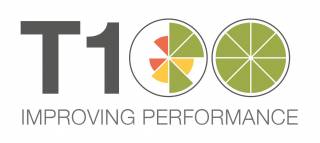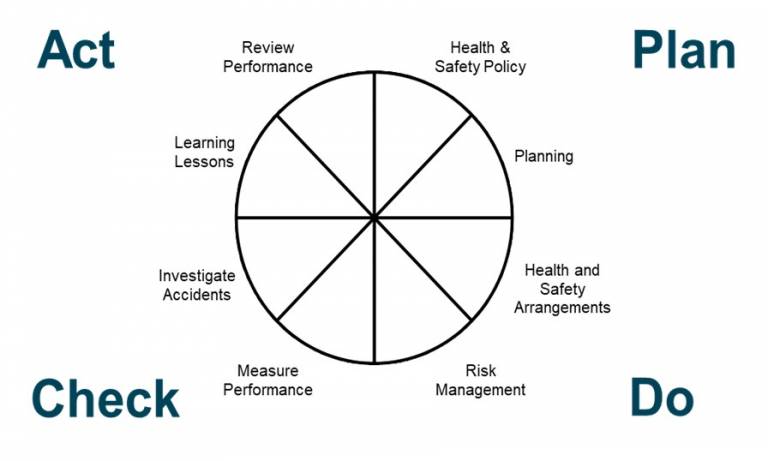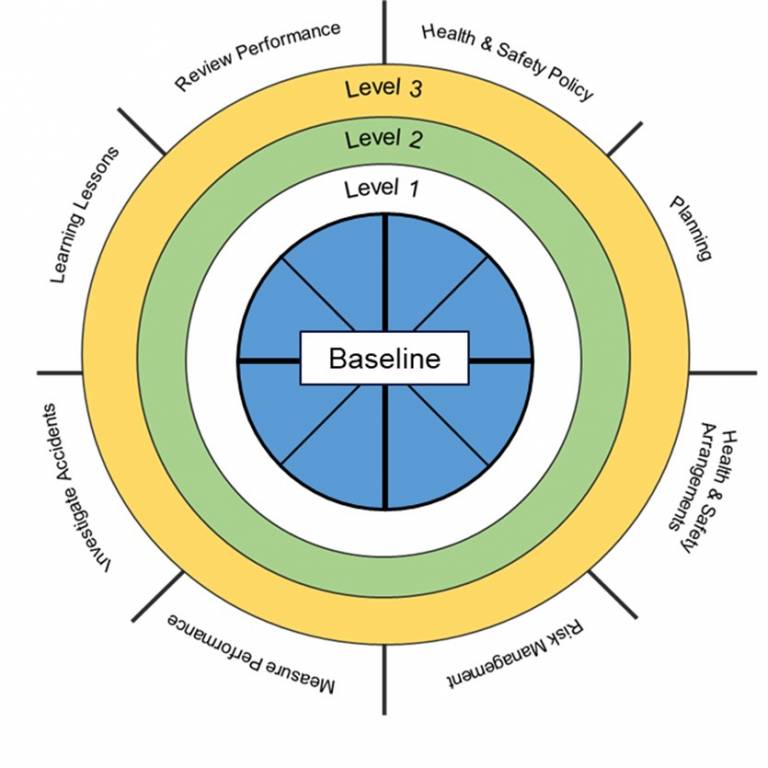Target 100 programme (T100)
UCL needs a robust and systematic means of ensuring the management of health and safety of its activities.
Overview
Target 100 (T100) is a self-assessment and planning tool for improving departmental Health and Safety Management Systems (HSMS). An HSMS is a structured approach to managing health and safety to minimise the risk of injury and illness. It involves identifying, assessing and controlling risks in all UCL activities.

T100 is a systematic way of measuring and planning for improvement opportunities in safety. It is flexible and adaptable and can be used at all levels from group, department, and faculty to UCL wide. T100 uses a number of defined areas around the Plan, Do, Check, Act management system approach consistent with Health and Safety Executive and Higher Education guidance and is based on practical measures to promote continuous improvement in health and safety.
Key benefits
The tool provides a route map for improvement tailored to meet UCL’s environment and allows departments to consistently measure and plan for improvement because it tells them what is required in simple terms and how to measure it. The outputs can be readily visualised and easily understood and therefore plans can be set and monitored which can be built on year on year and which are not just isolated activities that fall into disrepair after a period and then have to be revisited. It enables all departments (whether low or high hazard) to put in place a meaningful and proportionate management system where the level of effort and control needs to be proportionate to the level of risk.

How T100 works
The measures of the T100 tool have been grouped into four levels - Baseline, Level 1, 2, and 3. The baseline measures are those which form the minimum requirements expected by UCL policy and are mainly concerned with presence or absence. They are the first step in examining the strengths and weaknesses that may exist in a department’s current arrangements. Measures at Level 1, 2 and 3 examine issues in greater depth and deal mainly with the quality and good practice aspects of the issue. This will help departments meet the full requirements of UCL policy and standards.

Evidence for determining whether the measure is being met comes from different sources depending on the measure. Examples are riskNET, records (training register, minutes etc), sampling (visits and interviewing people from different areas and levels of responsibility) and analysing relevant documents (handbook, inspections etc) and scoring them according to the evidence presented.
The aim or 'target' is to achieve 100% of measures at each level (hence Target 100).
T100 Lite
To help ensure the level of effort and complexity of the system is in line with the risks faced by individual departments, every department has been categorised as either High or Low Hazard using the Hazard Survey Checklist. Low hazard departments are not required to implement the full T100 but must achieve 100% of the T100 Lite assessment process.
T100 Lite is a simpler version of T100. At an initial meeting between the department and Safety Services, the department is provided with its own copy of the tool and a copy of the presentation explaining the process and timescales. The Department determines how it will complete its own assessment and over what timescale (to a maximum of 12 months from receipt of the tool). The Department and safety advisor agree on key dates to meet and review departmental progress and discuss any issues including ways to address any gaps identified.
T100 Lite toolkit
The T100 Lite Toolkit is designed specifically to help low-hazard departments by providing user-friendly guidance and templates that are suitable for Low Hazard departments.
> Access the T100 Lite Toolkit
Mapping and visualisation of progress in T100
Like any assessment tool results on performance are generated, gaps are identified and a plan to improve can be made and then monitored. It is important that the results can be readily understood at a glance and for this reason, the tool maps performance in segments of the wheel model.
Each part of the HSMS is represented by a segment of the wheel. If all measures in that segment are present to the standard required then the segment will show as a complete green segment. No colour would indicate that no measures could be evidenced.

The diagram above shows a department’s progress from initial assessment through to achievement of 100% of all measures.
Certificates are awarded on successful completion of each level from Baseline to Level 3.
Last updated: Monday, December 12, 2022
 Close
Close

